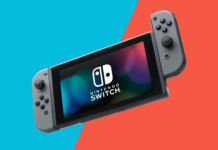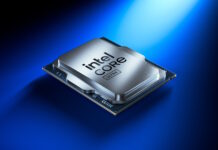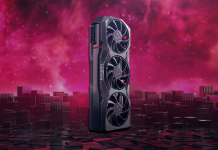The video card market is very active today, and I don’t think anyone has missed the attention video cards have been given lately. The two big players on the market, and to be quite honest, the only two players regarding video cards, are nVidia and ATi…
The video
card market is very active today, and I don’t think anyone has missed the
attention video cards have been given lately. The two big players on the
market, and to be quite honest, the only two players regarding video cards,
are nVidia and ATi.
Naturally, nVidia
and ATi want to cover as much of the market as possible. Therefore, we have
seen that they now launch more and more different versions of each video
card they release. To release many versions of the same card can cause problems,
which we saw already when nVidia released GeForce4 Ti4800SE – a card that
was slower than a Ti4600. Pretty contradictory, or what do you think?
But read on,
because this winter it has become slightly more difficult.
Pro, Ultra, XT,
LE, SE are suffixes that most people has become familiar with in different
ways. Video card manufacturers have begun to use pretty tedious methods
when they choose the name of a card. We’ll begin with having a look at ATi
and nVidia’s current line-ups, respectively. Notice that we rank the cards
after their performance. (In the list, we have their current and last generation
of cards.)
- Radeon 9200 SE
- Radeon 9000
- Radeon 9200
- Radeon 9000 Pro
- Radeon 9200 Pro
- Radeon 9100
- Radeon 9500
- Radeon 9600 SE
- Radeon 9600
- Radeon 9600 Pro
- Radeon 9800 SE
- Radeon 9500 Pro
- Radeon 9600 XT
- Radeon 9700
- Radeon 9800
- Radeon 9700 Pro
- Radeon 9800 Pro
- Radeon 9800 XT
These are the
official versions that exist from ATi’s latest two generations of video
cards. To complicate things additionally for consumers, there is also a couple
of less official variations available, for example Radeon 9200 LE, Radeon
9700 LE and Radeon 9800 LE. The fact is that it also exists “LELE”
versions of some cards. How these compare to the others in the list we do
not know since we can’t find any believeable specifications.
Furthermore, the placement of e.g. the Radeon 9800 SE is very diffuse in our
list, since the card exists both with 128 and 256 bits memory bus which make
a huge difference in performance.
At least a quick
look at the list tells us one thing: we can not determine performance only
by looking at the numbers. A Radeon 9000 may, depending on suffix, be a faster
card than Radeon 9200 and so on. But it does not end here. What we so far
haven’t mentioned is the amount of memory. Not too seldom, cards with more
memory have slower ones as well.
There are 18
official cards in ATi’s Radeon 9×00 serie. About 10 cards too much if you
ask me. But it doesn’t stop here. If we are going to divide the cards after
their amount of memory, speed variations of the memory and the inofficial
“LE” versions, we would probably end up with something around 30
different cards.
We’ll cover that
further on the next page, and where ATi is as guilty as nVidia; the usage
of the “SE” suffix.
On the next
page we take a look at nVidia’s video cards and what they are called.
We started the
article with complaining on nVidia’s Ti4800SE. The GeForce 4 Ti series partly
belongs to the earlier generation.
- GeForce 4 Ti4200
- GeForce 4 Ti4200-8x
- GeForce 4 Ti4400
- GeForce 4 Ti4800 SE
- GeForce 4 Ti4600
- GeForce 4 Ti4800
Already, we may
notice a peculiar thing – a 4800SE is slower than a 4600. However, we’ll concentrate
on the FX series:
- GeForce FX 5200
- GeForce FX 5200 Ultra
- GeForce FX 5600 XT
- GeForce FX 5600
- GeForce FX 5700
- GeForce FX 5600 Ultra
- GeForce FX 5700 Ultra
- GeForce FX 5900 XT?
- GeForce FX 5800
- GeForce FX 5900 SE
- GeForce FX 5800 Ultra
- GeForce FX 5900
- GeForce FX 5900 Ultra
- GeForce FX 5950 Ultra
nVidia has improved
slightly since last time, but we still find cards overlapping each other.
5700 is, for example, slower than a 5600 Ultra. A hidden problem is that some
of the cards are available in two versions, e.g. there are two versions of
the GeForce FX 5600 Ultra with different clock frequencies. It’s usually rather
difficult to sort out the two versions from one another by looking at the
box. FX 5200 suffers from the same “problem”; there are one version
with 64-bits memory bus and another with 128-bits.
nVidia has done
something nasty with the release of the XT. ATi was the first to use these
two lettersm which is an abbreviation for “eXTreme”. In nVidia’s
case, it means more like “low-budget”. This could lead to confusion,
and people may believe that in nVidia’s case it stands for a faster version,
in conformity with ATi, or the other way around: low-budget in ATi’s matter,
which certainly isn’t the case. Nevertheless, this was not a fair move by
nVidia.
Another bad thing
is that manufacturers virtually write out “SE” on their 5900 cards
today. I.e. if you buy a GeForce FX 5900 non-Ultra today, you could get a
nice 5900 with the speeds 400/850 or be less lucky and receive the slower
5900SE (400/700).
Finally, nVidia
has entirely changed the meaning of “SE”. Let’s have a look at the
GeForce 4 MX series.
- GeForce 4 MX 420
- GeForce 4 MX 440
- GeForce 4 MX 440 SE
- GeForce 4 MX 440-8x
- GeForce 4 MX 460
Briefly, the
significance of SE has gone from “faster” to “slower”.
The frequently occuring meaning of SE is usually “Special Edition”
or “Second Edition”, which also outside the video cards market
signify something better than the “original version”.
So, lets sum it
all up.
We already have
a jungle of video cards looking only at the different chips that are available
from ATi and nVidia. Obviously, this jungle becomes a gargantuan rain forest
thinking about all the different models from the different third-party manufacturers
that are available.
We have got used
to that ATi names its faster cards “Pro” and that nVidia names its
“Ultra”, respectively. Some manufacturers turn this around and add
an “Ultra” suffix on their Radeon cards or vice versa. Another thing
that we’ve seen is that certain manufacturers have “Ultra” in all
their model names, which naturally adds to the perplexity. An example is a
5900SE card which now is being sold with a title containing “Ultra”.
Since nothing on the box indicates that it is an “SE”, but only
says “5900”, one might think that they are dealing with a 5900 Ultra.
Other phenomenon
we have seen is that some manufacturers chosed to name their Ti4200-8x as
Ti4280. This isn’t exactly mislieading but surely another disordering moment
when you are searching for the right card in the crowd.
In short, what
already was complicated has become more so.
It is difficult
even for the manufacturers to keep track of their cards – which has become
obvious for us while conversating with ATi, nVidia and their third-party manufacturers.
There has been occasions where they’ve had a wrong understanding about how
an SE stands against a “non SE” and we have even seen that they
not always have known which of the different models they actually manufacture
by themselves.
As aforementioned,
it is hard to find in the jungle even for the manufacturers themselves, and
for editors who are badly into the subject, it is often quite difficult to
have a good overview. That this leads to disaster for the consumer is not
hard to figure out. This winter, it is even more difficult, bearing the manufacturers
both “XT” and “SE” series in mind.
This article
is intended to fill two purposes: partly an expectation that our friends among
manufacturers and resellers actually identify the problem and work to help
resolving it, and partly to help our readers to find the right product they’re
looking for. Look up your facts: at what clock frequencies are your card running,
how much memory does it have, what sort of memory bus and so on. A good idea
is to not take for granted that that 9800 or 5900 is such a good buy. If the
card is cheap there is a big chance that it is a very much slower “SE”
card. A tip is to try to look up a review of the specific card you are considering.
Another is to ask in e.g. NordicHardware’s forum – someone might have bought
the card that you are thinking of.
Finally, we in
NH crew are at your disposal when you have questions. The fact is that NordicHardware
is among those who have reviewed most video cards in the whole world during
the year of 2003, so hopefully, we possess knowledge enough to aid you in
the forum.





















